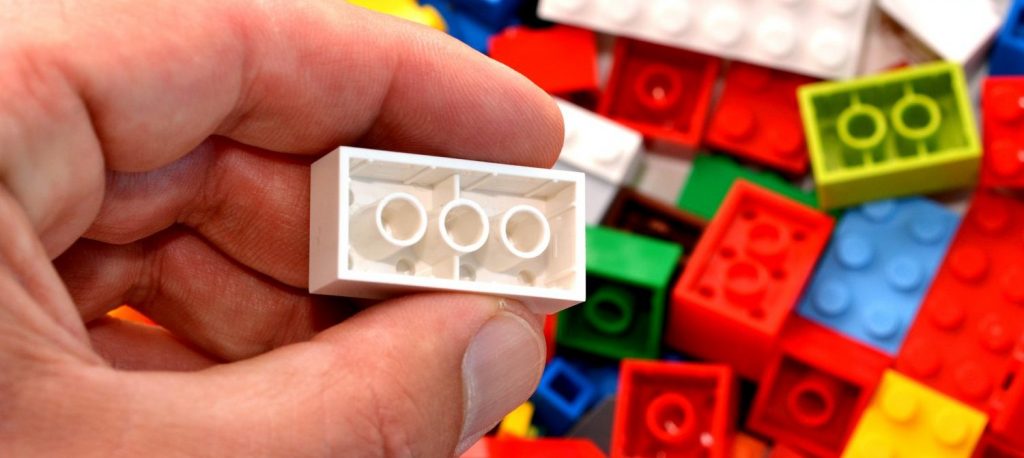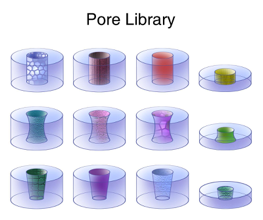THE BUILDING BLOCK LIBRARY AND THE MOLECULAR TOOLKIT

Covalent technology produced the world’s first 2D material…yes, before graphene.
Unlike graphene, Covalent 2D materials are an invention, not a discovery. As an invention, the materials are designed to be easily and cost-effectively manufactured. They are able to address a large range of real-world requirements, such as dealing with complex biological systems, or the requirements of stability and reliable operation in harsh industrial environments.
Covalent technology is taking familiar concepts from the everyday world and applying them at the molecular scale to enable designing, building and manufacturing with the same speed and cost effectiveness we have at the macroscale.
The Building Block Library and the Pore Library
At the heart of the Covalent technology is a library of atomic scale molecular building blocks. Think of these as virtually LEGO™ blocks at the atomic scale. Like LEGO blocks, they can be “snapped” together to form larger structures.


The inside of each block can have a pore. The pore can be made larger or smaller. The interior of the pore can be designed with complete precision to allow for application-dependent customization.
The building blocks or modules come in a variety of standard sizes and shapes. From this building block library, blocks can be selected or modified for use in a given application.
The one requirement of a building block is that it be able to tessellate. The building blocks have been designed to self-assemble and permanently bond to each other upon demand. This allows for the manufacture of stable macroscale products which are designed with complete precision at the atomic scale.
In addition to the functionality – the “connect” points – on the sides, each block has “connect” points on the top and bottom. The connect points on the top can be used to create customized surfaces or add other functionality. The connect points on the bottom can be used to bind to another product such as porous macro-scale material or a nonporous macro-scale material. Connect points on the sides can be used to attach one block to another to create membranes, scaffolds, surfaces and other macro-scale products.
The inside of the block – the pore or the solid interior – can be modified to change the work that the building block performs. This interior modification can be made without affecting the outside of the building block and its ability to be assembled into a product – its ability to be easily and reliably manufactured.
The World’s First Molecular Toolkit
This novel concept brings a completely new level of capabilities to a range of products across medical, energy, separations and environmental applications.
The Molecular Toolkit is stocked with Building Block Libraries, Pore Libraries and other components. The components are designed to fit together to create more complex units and larger, macro-scale products. For example, the water membranes use a Library of customized anti-fouling and anti-scaling surface chemistries designed to attach to the building block modules.
The components mix and match to enable to quickly and cost-effectively build a range of products. Imagine a workshop stocked with a selection of mechanical or electronic components that can be put together in a new configuration to create a new product without having to create the nuts, the bolts, the capacitors, etc. from scratch each time. Or imagine a LEGO kit with standard LEGO bricks, DUPLO elements, base plates, and a range of special elements.
The Molecular Toolkit enables designing and building on a molecular scale with complete atomic precision, and manufacturing macroscale products cost effectively.
A System for Building a Vast Array of Products

Covalent 2D materials are the most atomically precise materials ever built: they are complex constructions with every atom in the right place. Nature builds this precisely. But up until now, people have only made pharmaceuticals with this level of precision – not materials.
Using the programmable molecular toolkit and building system based on families of molecular building blocks/LEGOs that become products such as membranes, coatings, scaffolds, sensors, analytic tools, therapeutic devices, and more. These new products will operate at ultra low energy and ultra high precision.
